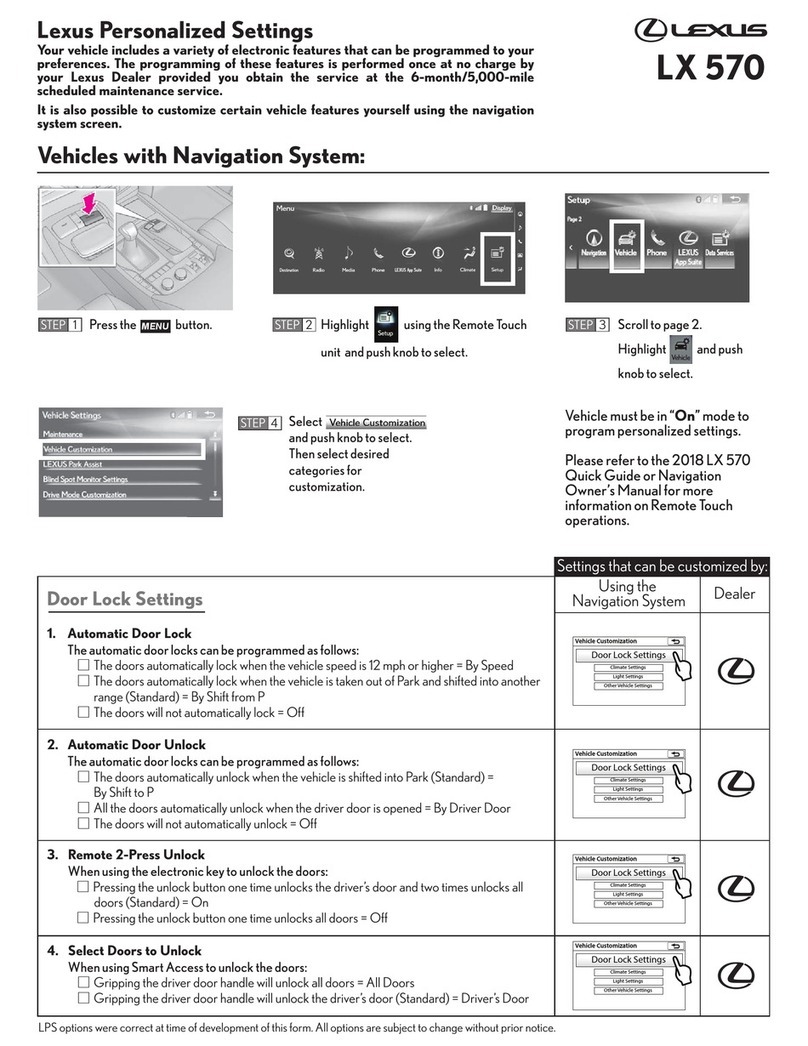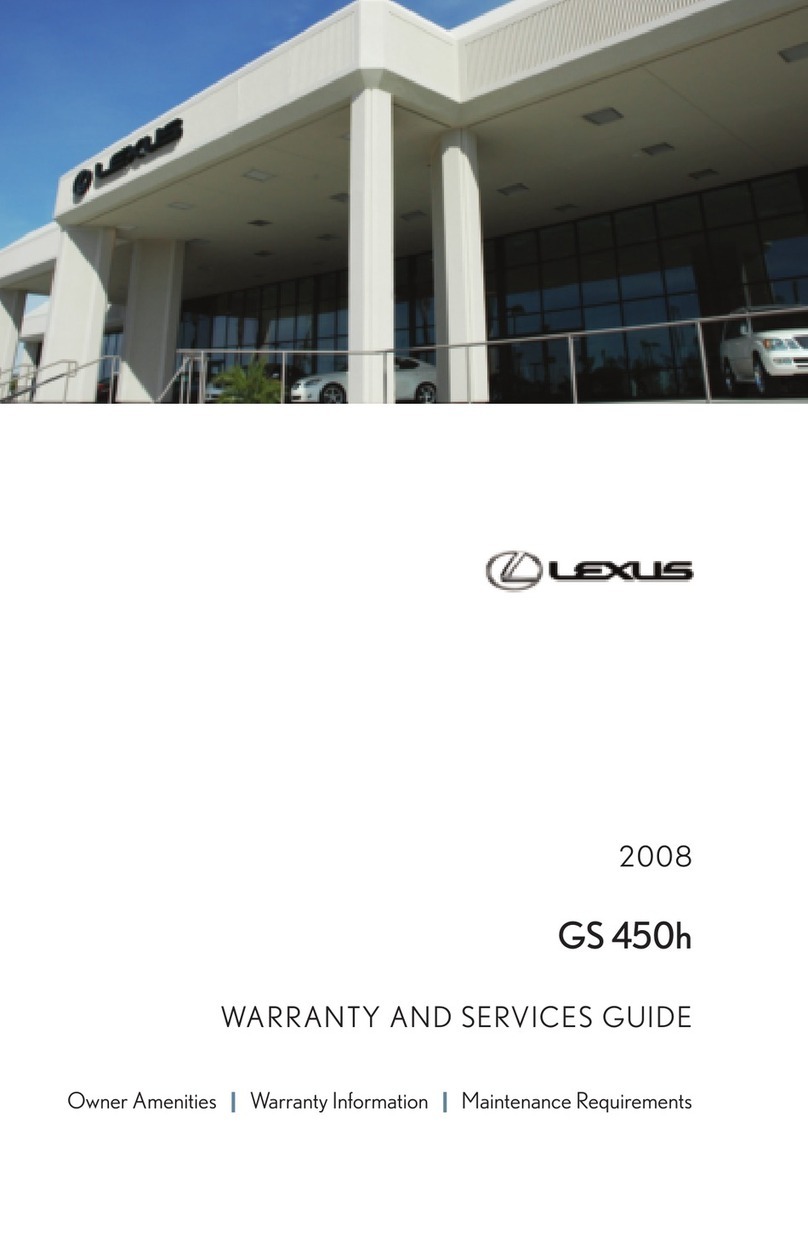Lexus GS 2013 User manual
Other Lexus Automobile manuals

Lexus
Lexus HYBRID RX400h Installation guide

Lexus
Lexus 2015 ES 300h User manual

Lexus
Lexus RC F User manual

Lexus
Lexus GS 350 2014 User manual
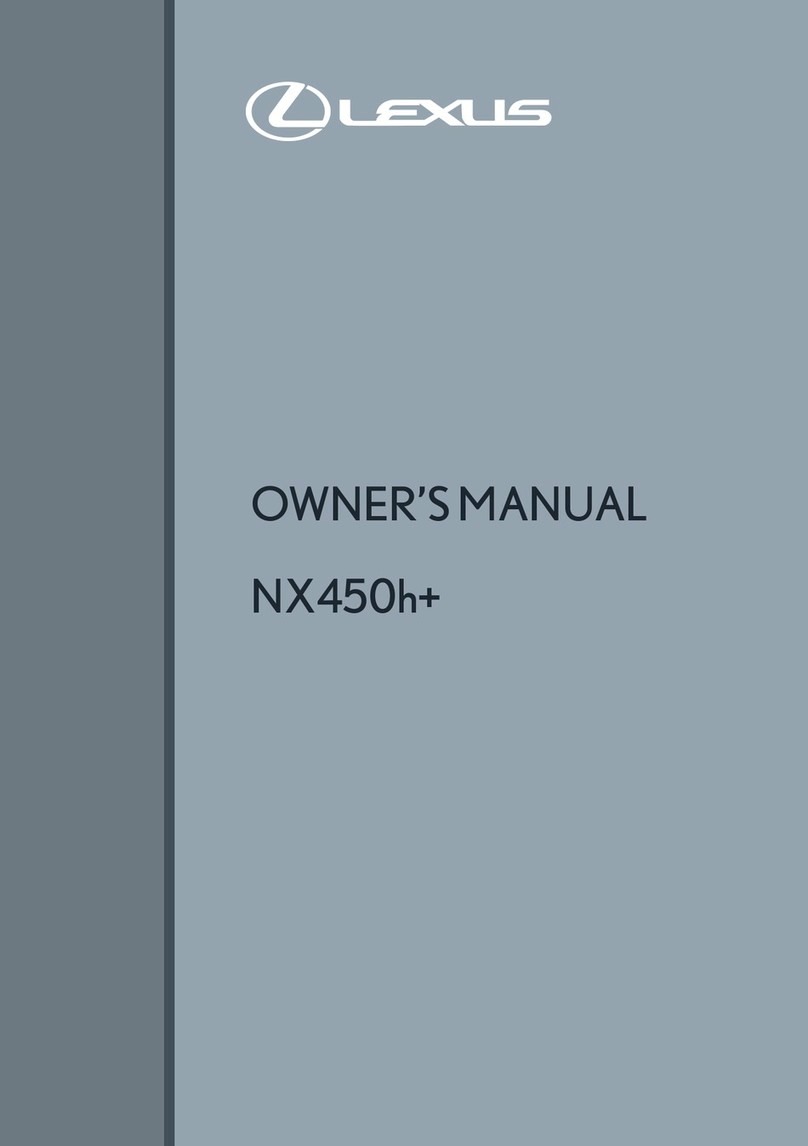
Lexus
Lexus NX450h+ 2021 User manual

Lexus
Lexus LS500 User manual

Lexus
Lexus 2013 IS250 User manual

Lexus
Lexus IS 350C 2012 User manual

Lexus
Lexus RZ450E 2023 User manual
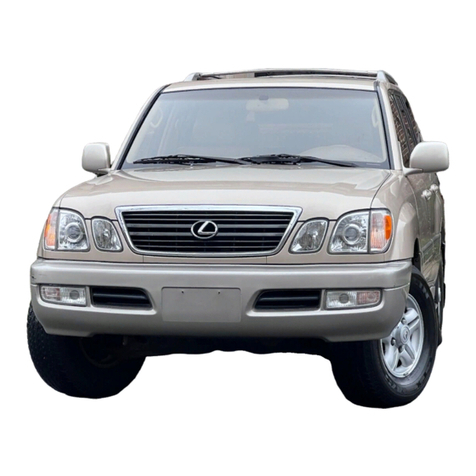
Lexus
Lexus 2006 lx 470 User manual
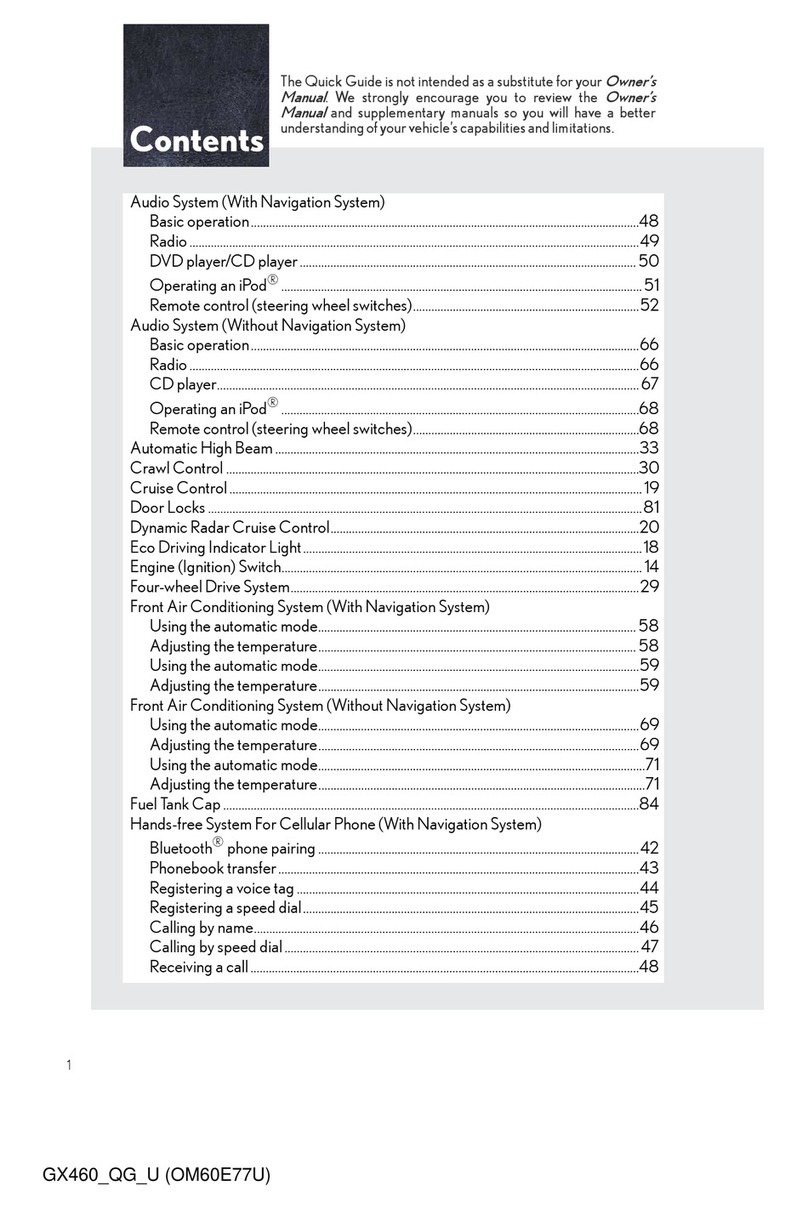
Lexus
Lexus GX4602009 User manual

Lexus
Lexus 2012 RX450h User manual

Lexus
Lexus 2015 NX 200t User manual

Lexus
Lexus LS600h User manual

Lexus
Lexus 2015 NX 200t User manual
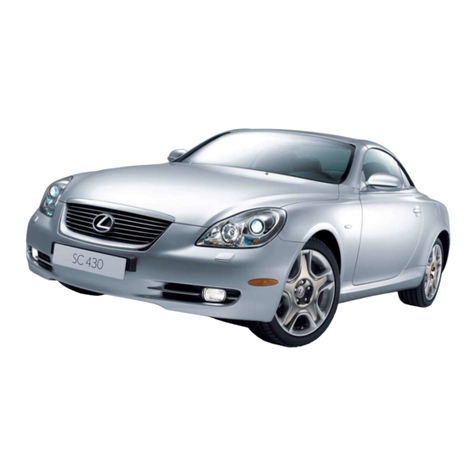
Lexus
Lexus SC 430 2006 User manual

Lexus
Lexus ES 2015 User manual

Lexus
Lexus GS430 User manual

Lexus
Lexus LS 460 User manual
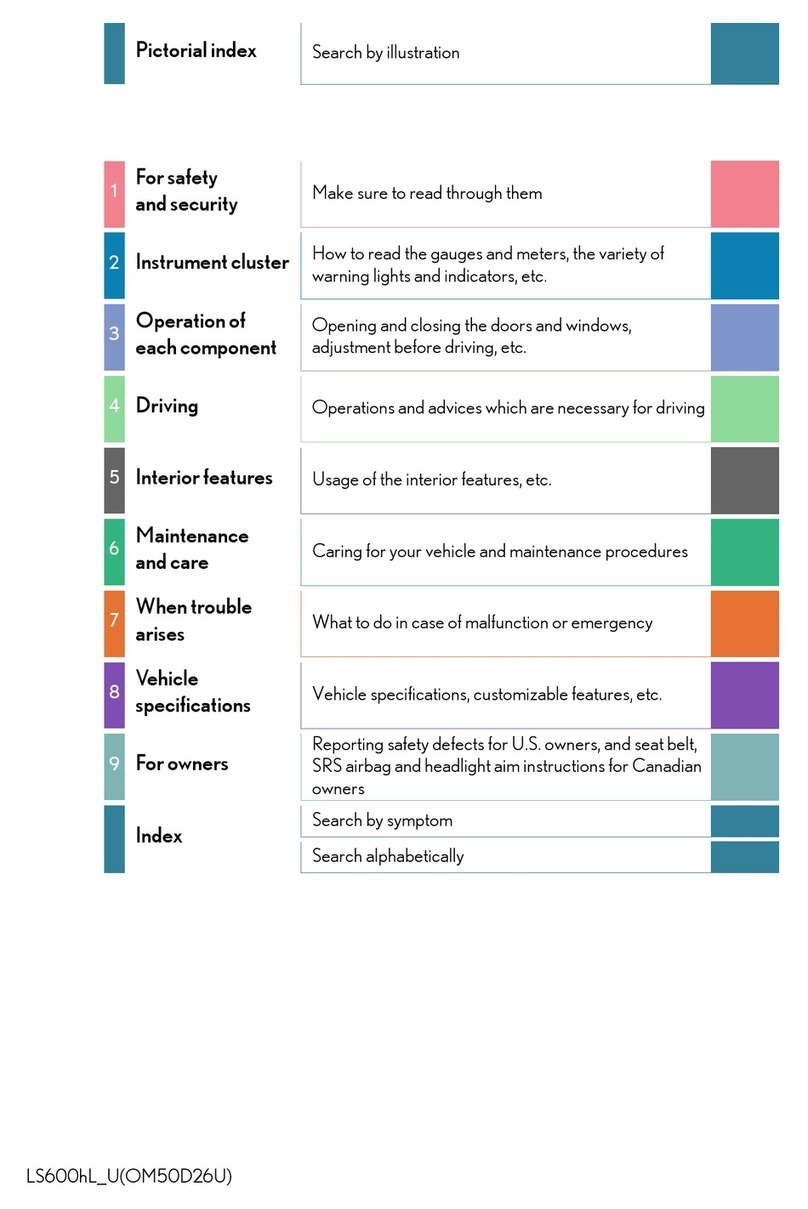
Lexus
Lexus LS600hl User manual


